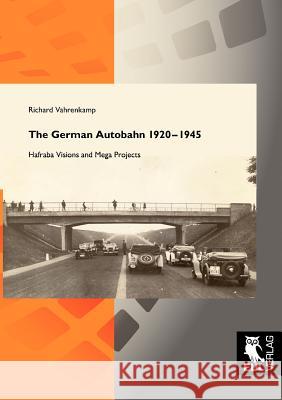The German Autobahn 1920-1945: Hafraba Visions and Mega Projects » książka
The German Autobahn 1920-1945: Hafraba Visions and Mega Projects
ISBN-13: 9783899369403 / Angielski / Miękka / 2010 / 280 str.
The expressway network in Europe developed into an essential infrastructure of the 20th and the beginning of the 21st century and provided means of commuting, as well as accommodated leisure travel and the cargo supply for the mass consumption society. This book discusses, how expressways were developed in Europe in the 1920s and 1930s. It focuses on the various forerunner projects and the role of the Hafraba association, which has been significant in the Hessian region, with its actors in Kassel, Frankfurt and Darmstadt. It is shown, how the Autobahn concept developed, from the Italian expressways to the Bonn-Cologne Autobahn and to the design of the Nazi Autobahn project. The Bonn-Cologne Autobahn was the first Autobahn in Germany, opened in 1932 by Konrad Adenauer, later Chancellor of West-Germany. This Autobahn section is here explored for the first time. As part of the Nazi Mega Project various regional legs are explored and for the first time drawn to scholary attention: The leg Frankfurt-Kassel-Gottingen, the leg Frankfurt-Darmstadt-Heidelberg-Karlsruhe and the leg Munich-Salzburg. The goals of the Nazi mega project are evaluated. Further the book shows, how traffic on the Autobahn developed and which experiences were made by driving on the Autobahn. The book discusses various approaches towards a theory on infrastructure.











